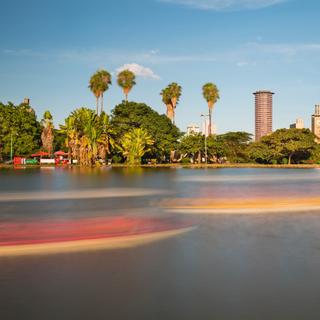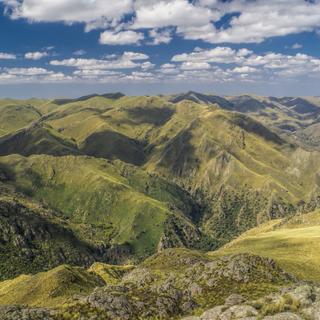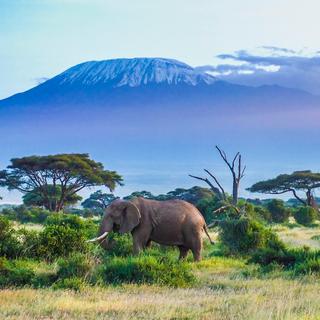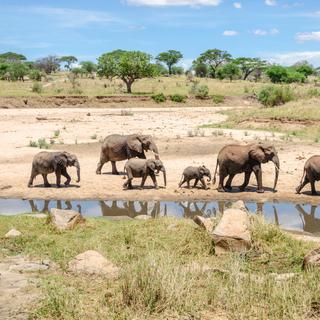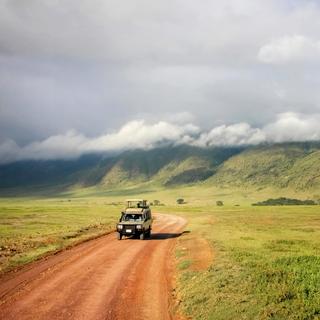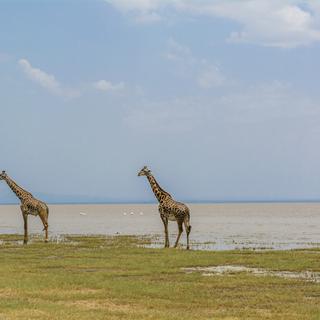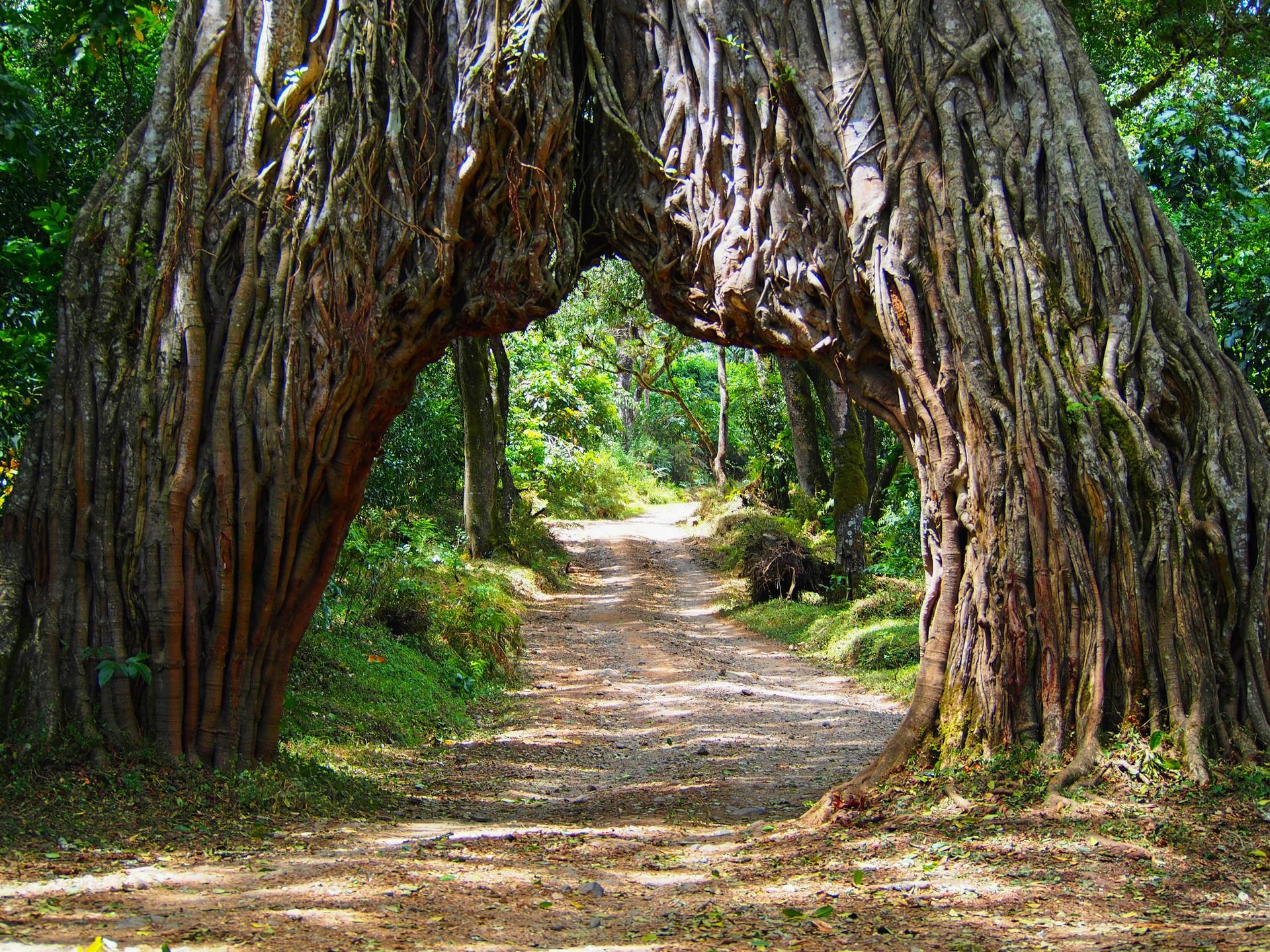
Arusha weather and climate in 2025

Arusha weather and climate in 2025
Day
21 °C
Night
12 °C
Precipitation
5 mm
in month
Rainy days
1 days
in month
Daylight
12 hours
average
Sunshine
6 hours
average
Humidity
72 %
Weather charts for Arusha

Find more destinations like this
Destinations with similar weather to Arusha
Other destinations in Tanzania - National parks
Closest cities for Arusha
Last week's weather in Arusha
The week of 23 June 2025 - 29 June 2025 had an average daily temperature of 22 °C (72 °F) and a minimum (nighttime) temperature of 14 °C (57 °F). Both the daily and night temperatures in Arusha are roughly same as the long-term average, which is around 22 °C (72 °F) and 13 °C (55 °F) respectively. The average temperatures during different times of day (local time) were following: 7am 14 °C (57 °F), 10am 18 °C (64 °F), 1pm 21 °C (70 °F), 4pm 22 °C (72 °F), 7pm 17 °C (63 °F), 10pm 16 °C (61 °F).
During this week: 6 days without rain and 1 day with light rain were observed. The total precipitation for the week in Arusha was 0 mm (0.00 in), which is below the area's average of 2 mm (0.08 in). During the daytime (from dawn to dusk), there was 72 % cloud coverage on average.
The wind's speed averaged 2.5 m/s. The prevailing winds blew from the East and South-East. The air pressure varied between 1014 hpa and 1021 hpa. The average air humidity was 78 % in Arusha.
During the daytime (from dawn to dusk), there were in average: 1 hour clear skies, 5 hours partially overcast skies and 7 hours overcast skies. On average, the time of sunrise was 06:38, and the time of sunset was 18:33.
Weather overview for Arusha
Weather overview
Arusha, a city nestled in Tanzania, offers a generally tropical climate that visitors can expect during their stay. Throughout the year, day temperatures can range from a milder 21 °C (70 °F) in July to the peak heat of 29 °C (84 °F) witnessed in February. Affording a wide array of experiences depending on the season, Arusha grapples with its least amount of rainfall in September, seeing just 1 day, while in stark contrast, April showers flourish with up to 13 days of precipitation. The night climate also sees variances, with the lowest temperatures in July reaching 12 °C (54 °F) and the warmest nights in April, rising to 16 °C (61 °F).
January weather
January in Arusha sees a gradual increase in daytime temperatures, peaking at 28 °C (82 °F). Concurrently, there's a noticeable decrease in nighttime temperatures, dropping to 14 °C (58 °F). The frequency of rainy days also decreases to an average of 5 days, and the total rainfall follows suit with a decline to 62 mm (2.44 in). Finally, the duration of sunlit skies starts to extend.
February weather
The peak daytime temperature of 29 °C (84 °F) in February marks the zenith of warmth in Arusha, alongside a diminishing trend in humidity, now at 65 %. The downward trajectory of rainy days is evident with only 4 days expected.
March weather
As March arrives, Arusha begins to witness a slight reduction in daytime heat, averaging 27 °C (81 °F), while evenings bring a rise in temperature to 16 °C (60 °F). An uptick in rainfall is observed, hitting 117 mm (4.61 in), and rainy days increase to around 7 days. The once abundant sun hours now take a dip, closing in at 7 hours.
April weather
By April, day temperatures in Arusha moderate to an average of 25 °C (77 °F), while nights warm to their annual peak of 16 °C (61 °F). The month is marked by the highest rainfall figures, reaching 178 mm (7.01 in), and the greatest number of rainy days, approximately 13 days.
May weather
May heralds a further decline in Arusha's daytime temperatures, now at 23 °C (73 °F), with nights also beginning to cool to 15 °C (59 °F). The downward trend in rainy days is clear, showing 10 days, and rain volume also decreases, settling at 92 mm (3.63 in). The solar presence reaches its yearly minimum, with the sunlight shining for about 6 hours daily.
June weather
The descending day temperatures, averaging 22 °C (72 °F) in June, are accompanied by a further reduction in night warmth to 13 °C (56 °F). As tourist season approaches, fewer rainy days, roughly 2 days, and a decline in rainfall with 13 mm (0.50 in) are predicted. Daylight experiences slight contraction.
July weather
July's onset of tourist season is punctuated by the start of the drying trend in Arusha. The month has the lowest daytime temperature average of 21 °C (70 °F), while night temperatures also hit their yearly low at 12 °C (54 °F).
August weather
August in Arusha is marked by a gradual rise in day temperatures, now averaging 23 °C (73 °F). The enduring dry season and ongoing tourist activities coincide with an increase in sunlit hours, approximately 7 hours.
September weather
As September arrives, the warmth in Arusha mildly escalates to an average of 25 °C (76 °F) by day, and nights become slightly warmer at 13 °C (55 °F). Additionally, the frequency of rainfall reaches a low with just about 1 day, while sunshine hours continue to stretch, nearing 8 hours.
October weather
October maintains the growing heat in Arusha with average day temperatures reaching 26 °C (79 °F). Nighttime warmth also ascends to 14 °C (57 °F). With the approaching rainy season, there is a slight uptick in wet days, around 4 days, and a rise in rainfall to 28 mm (1.10 in).
November weather
In November, Arusha experiences a continued rise in rainy days, now averaging 8 days, and rainfall amounts swell to 94 mm (3.70 in). Nighttime temperatures remain steady at 15 °C (59 °F), while the quantity of sunlight begins its descent, averaging 8 hours daily.
December weather
The onset of December implies a subtle rise in Arusha's daytime heat, averaging 27 °C (81 °F). Rainy days begin to taper off, settling at about 7 days, and rainfall volume sees a decrease to 83 mm (3.28 in).
FAQs
Is January typically a dry month in Arusha?
No, January is not considered dry in Arusha; on average, it experiences rain on about 5 days throughout the month.
What can travelers expect weather-wise during February in Arusha?
Travelers in Arusha during February can expect the year's highest day temperatures, averaging 29 °C (84 °F), while rain becomes less frequent.
How does the weather transition in March affect Arusha?
In March, a shift is noticeable with a moderate cooling of day temperatures and an onset of increased rainfall and evening warmth.
What weather conditions are prevalent in Arusha during April?
April in Arusha brings cooler days and the warmest nights of the year, along with the highest rainfall and number of rainy days.
How much sun can one expect in May in Arusha?
In May, the sunshine in Arusha is at its scarcest, providing approximately 6 hours of clear skies daily.
What shift in weather does June bring to Arusha's climate?
June in Arusha signifies a shift towards drier conditions, characterized by cooler days and nights, and reduced rainfall.
Does July's temperature in Arusha fall significantly?
Indeed, July in Arusha registers the lowest average daytime temperatures of the year, offering a more temperate climate for visitors.
How does the dry season affect August's weather in Arusha?
The dry season in August ensures that Arusha remains pleasantly warm with abundant sunshine for the majority of the day.
What can be expected from the September climate in Arusha?
September in Arusha promises warmer days, minimal rainfall, and extensive periods of sunshine, creating an inviting climate for outdoor activities.
How does the October climate prepare Arusha for the rainy season?
October's climate in Arusha mildly builds up to the impending rainy season with a gradual increase in both temperature and wet days.
What notable changes occur in Arusha's weather during November?
November sees a notable increase in rainfall and maintained night warmth alongside shorter daylight hours in Arusha.
Does Arusha's weather change considerably in December?
December in Arusha marks a slight increase in both daytime temperatures and a decrease in rainy days, signifying a transition in weather patterns.
